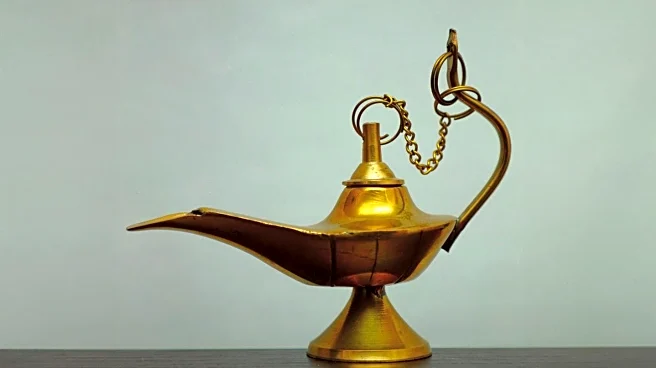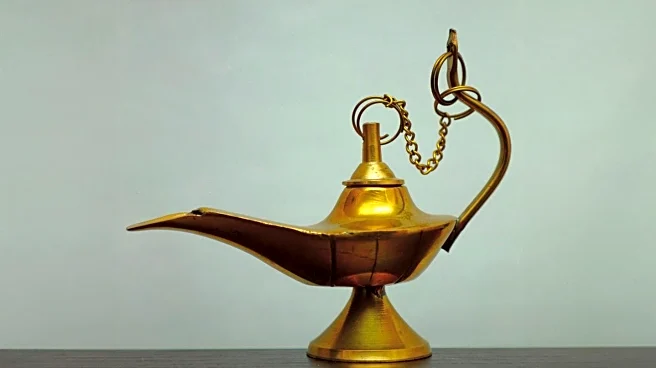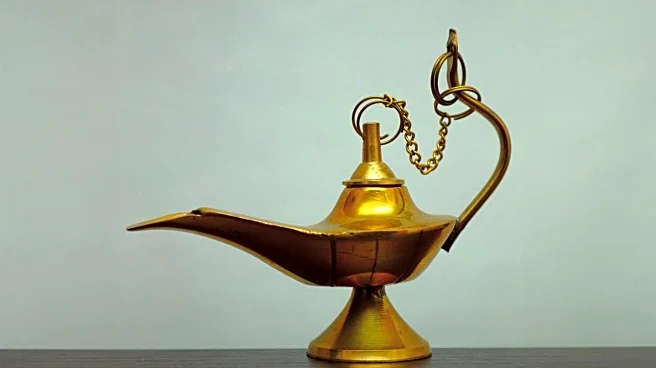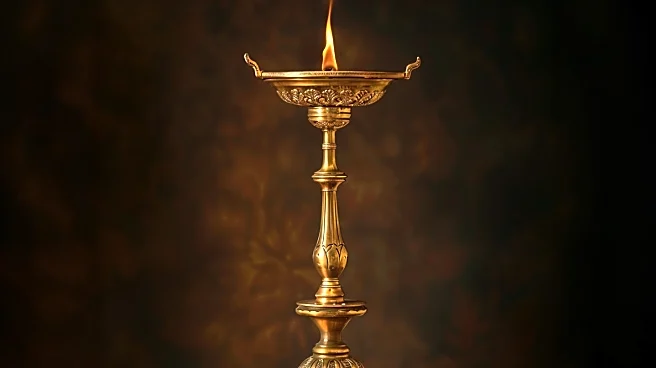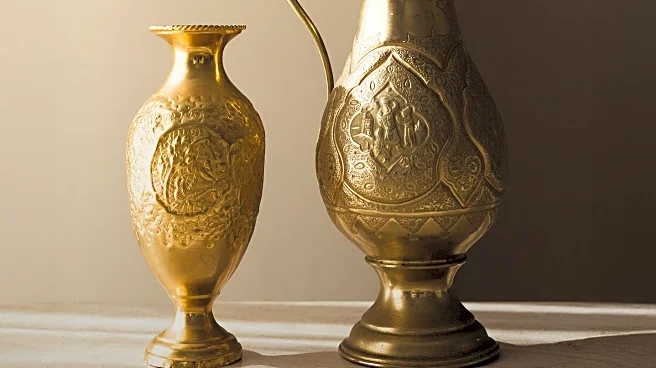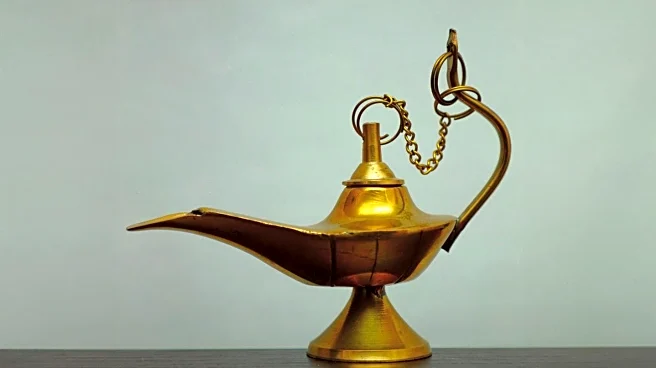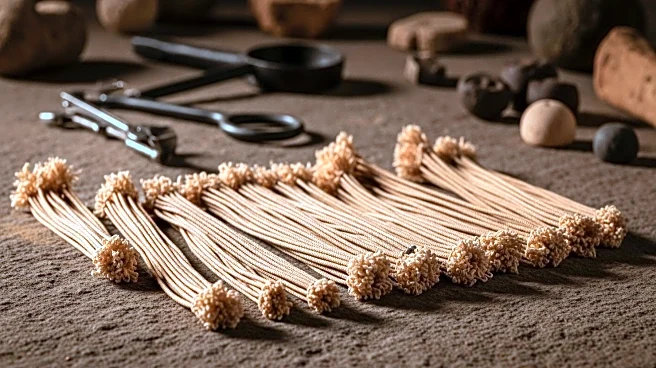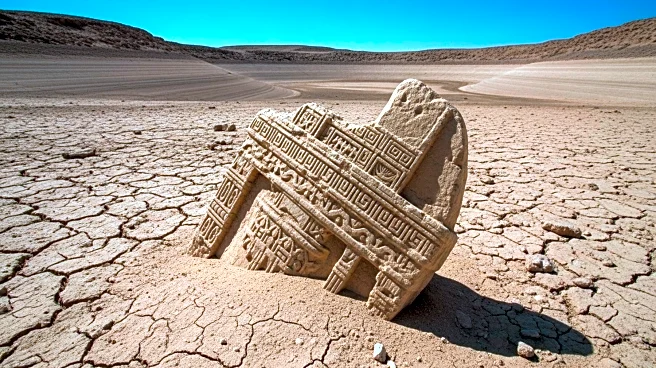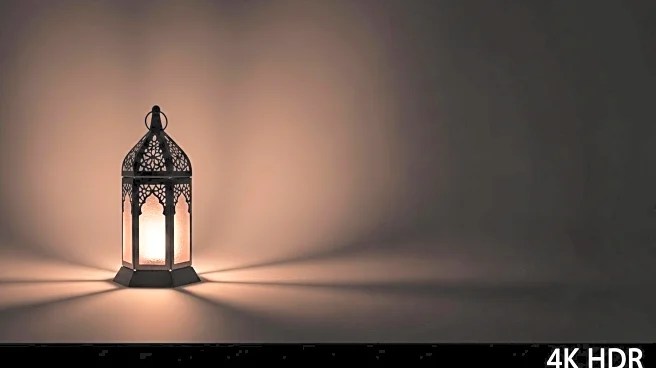What is the story about?
What's Happening?
A significant archaeological discovery has been made in Yehud, Israel, where the Israel Antiquities Authority (IAA) uncovered some of the oldest lamp wicks in history. These wicks, dating back to the Intermediate Bronze Age (c. 2500–2000 BCE), were found inside clay lamps during an excavation for a new neighborhood development. The wicks, made from textile, were preserved in unusual circumstances despite the moist Mediterranean climate, which typically leads to the decomposition of organic materials. The discovery is notable because wicks are intended for combustion and are rarely preserved after use. The lamps, found in ancient tombs alongside pottery, animal bones, weapons, and jewelry, were likely used during burial ceremonies. The wicks underwent a rare fossilization process and were made from recycled linen fabric, indicating early recycling practices.
Why It's Important?
This discovery provides valuable insights into ancient practices and the use of fire in burial rituals, which were common across the ancient Near East. The preservation of these wicks offers a rare glimpse into the economic conduct of the time, highlighting the recycling of precious materials. The find contributes to the broader understanding of the Intermediate Bronze Age population in the Land of Israel, which did not leave written records. The research underscores the importance of archaeological studies in piecing together historical narratives and cultural practices. The IAA's commitment to publishing these findings emphasizes the significance of even small discoveries in understanding the history of the region.
AI Generated Content
Do you find this article useful?
